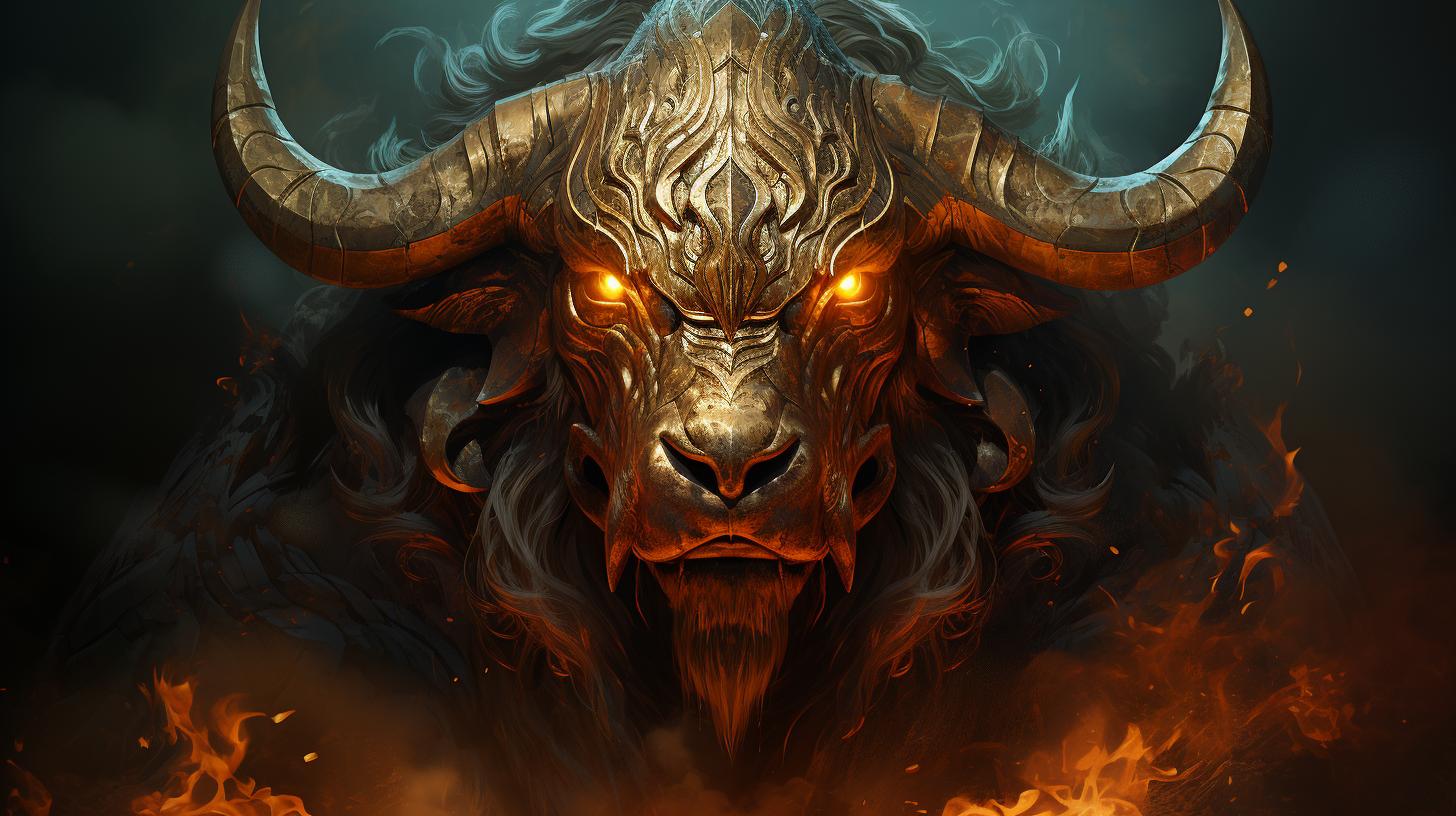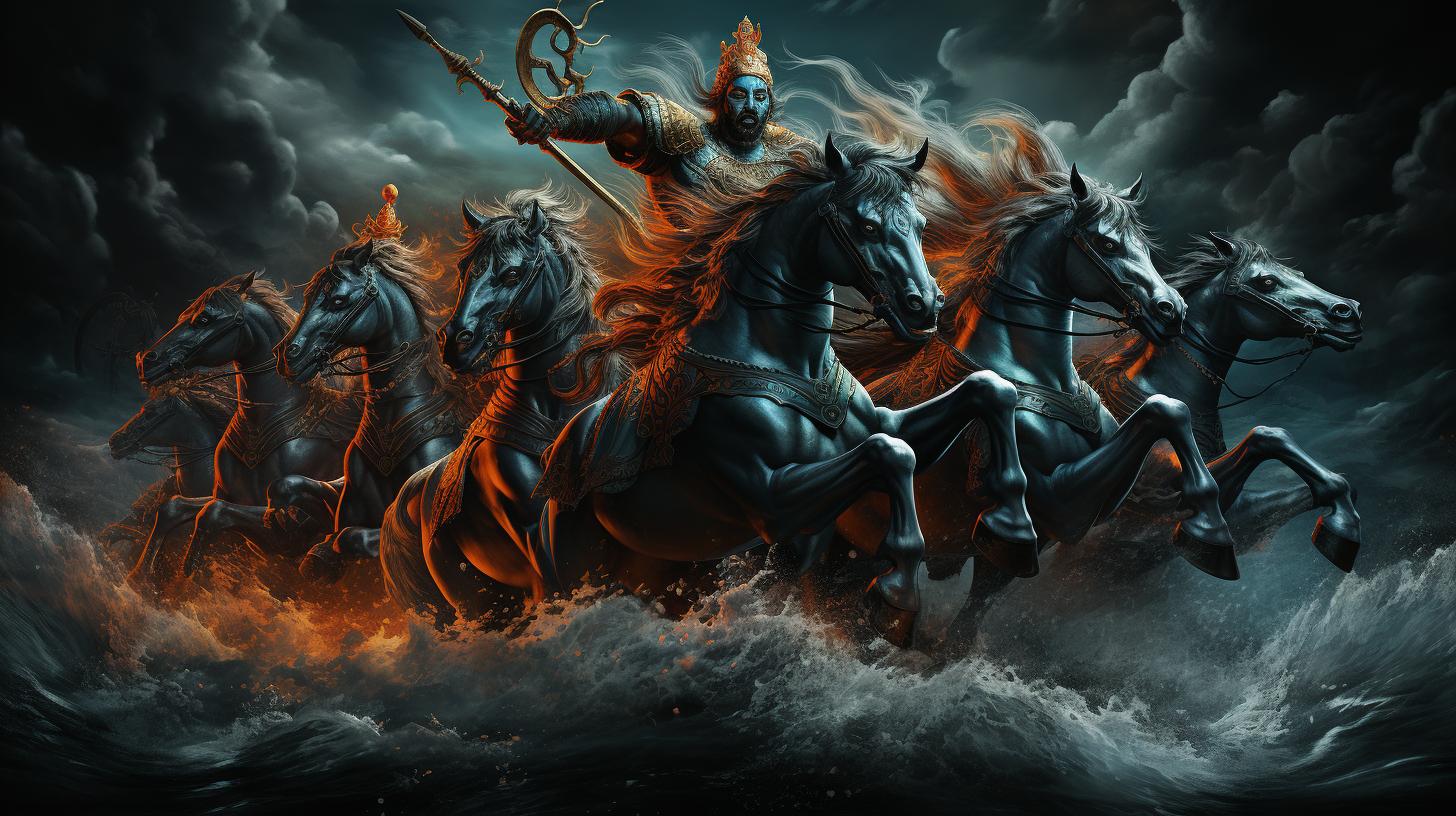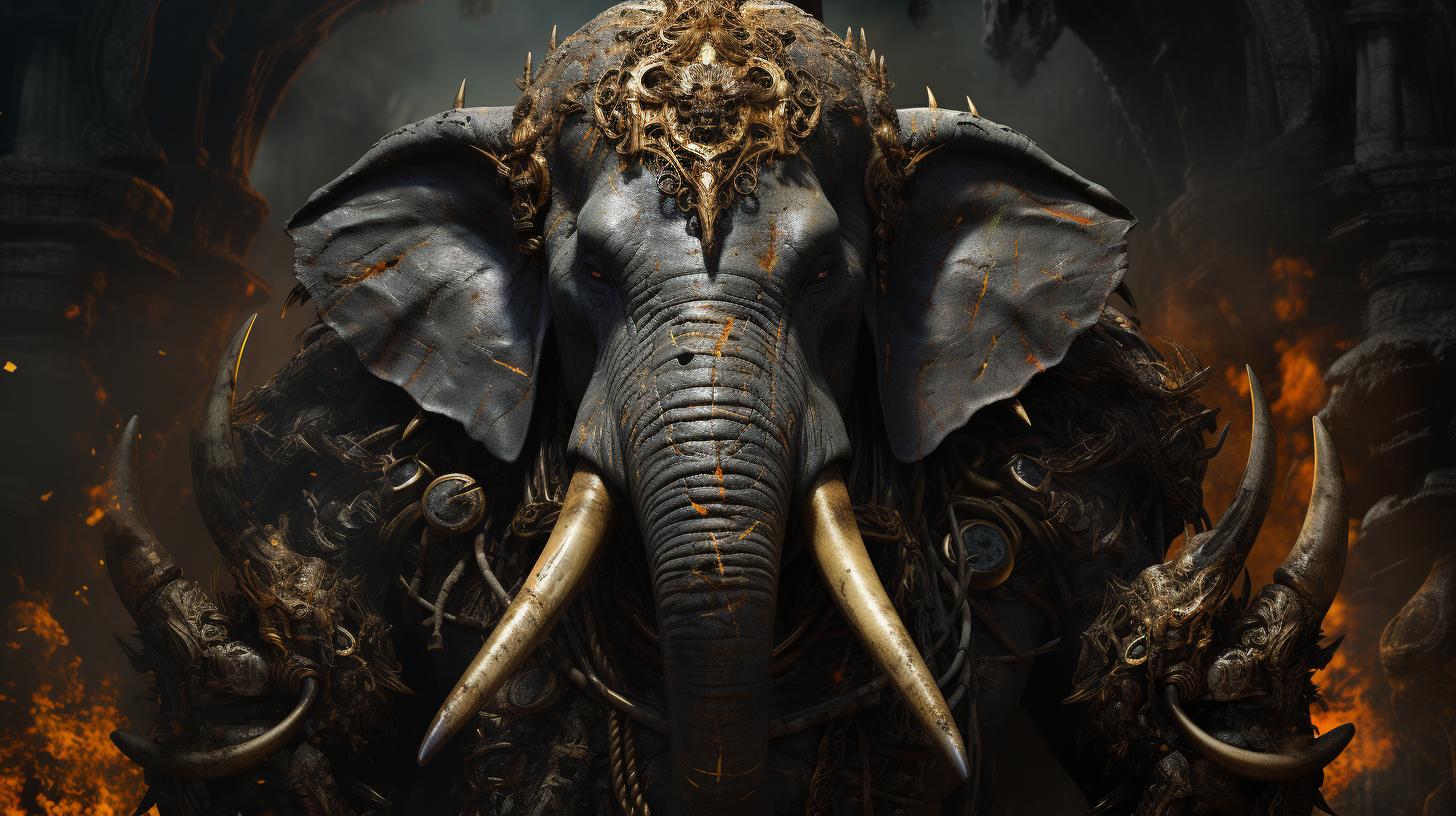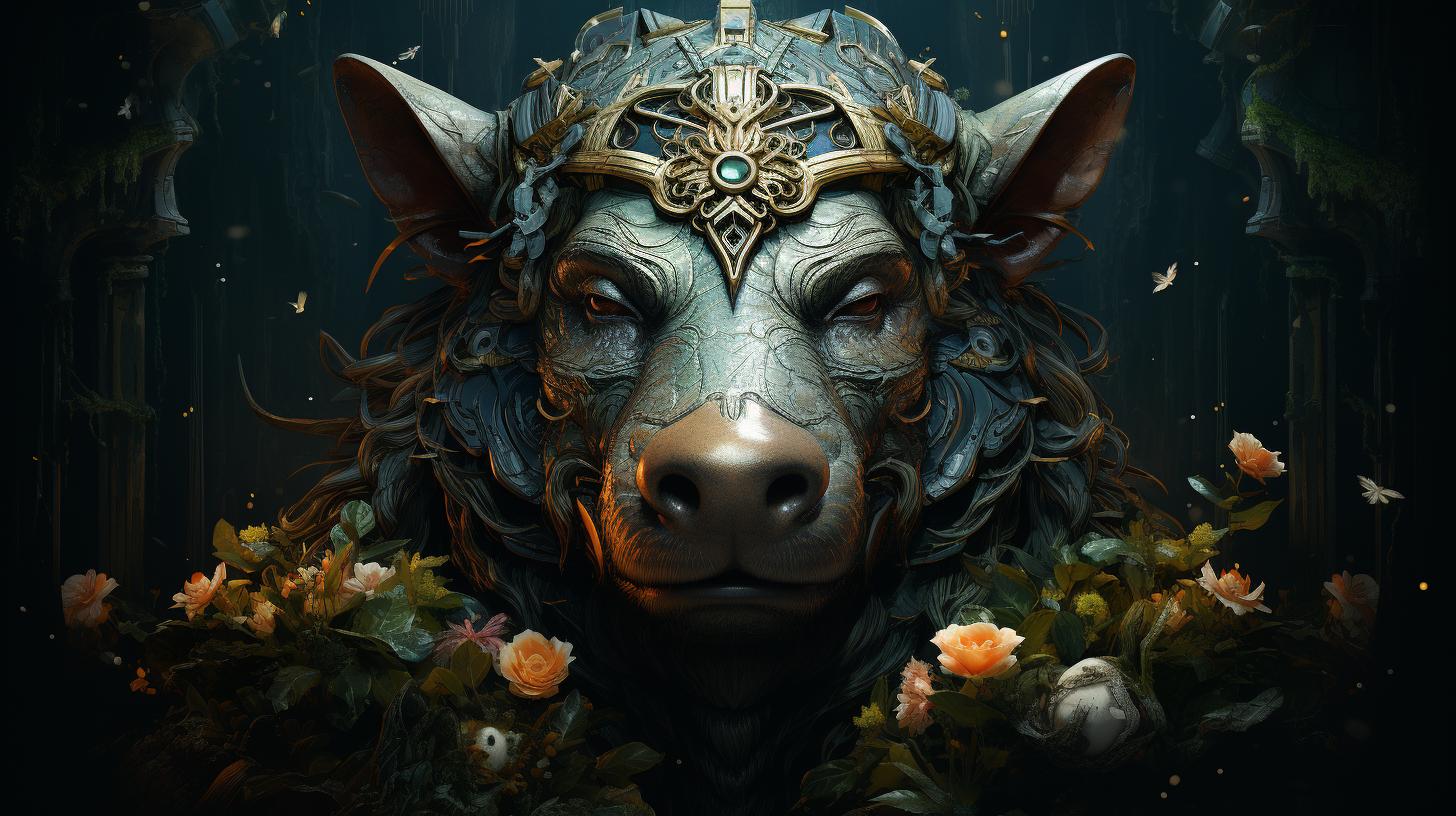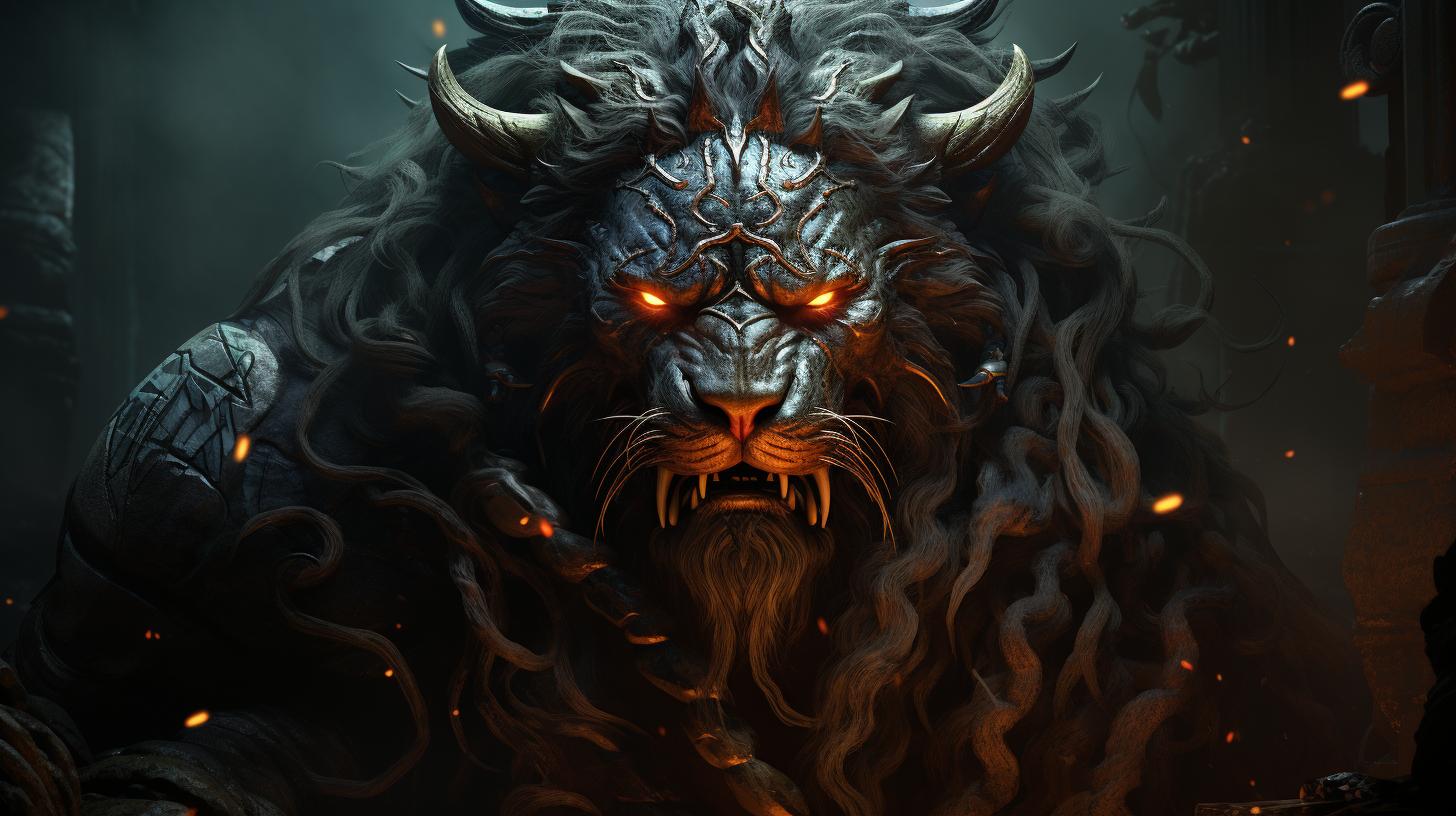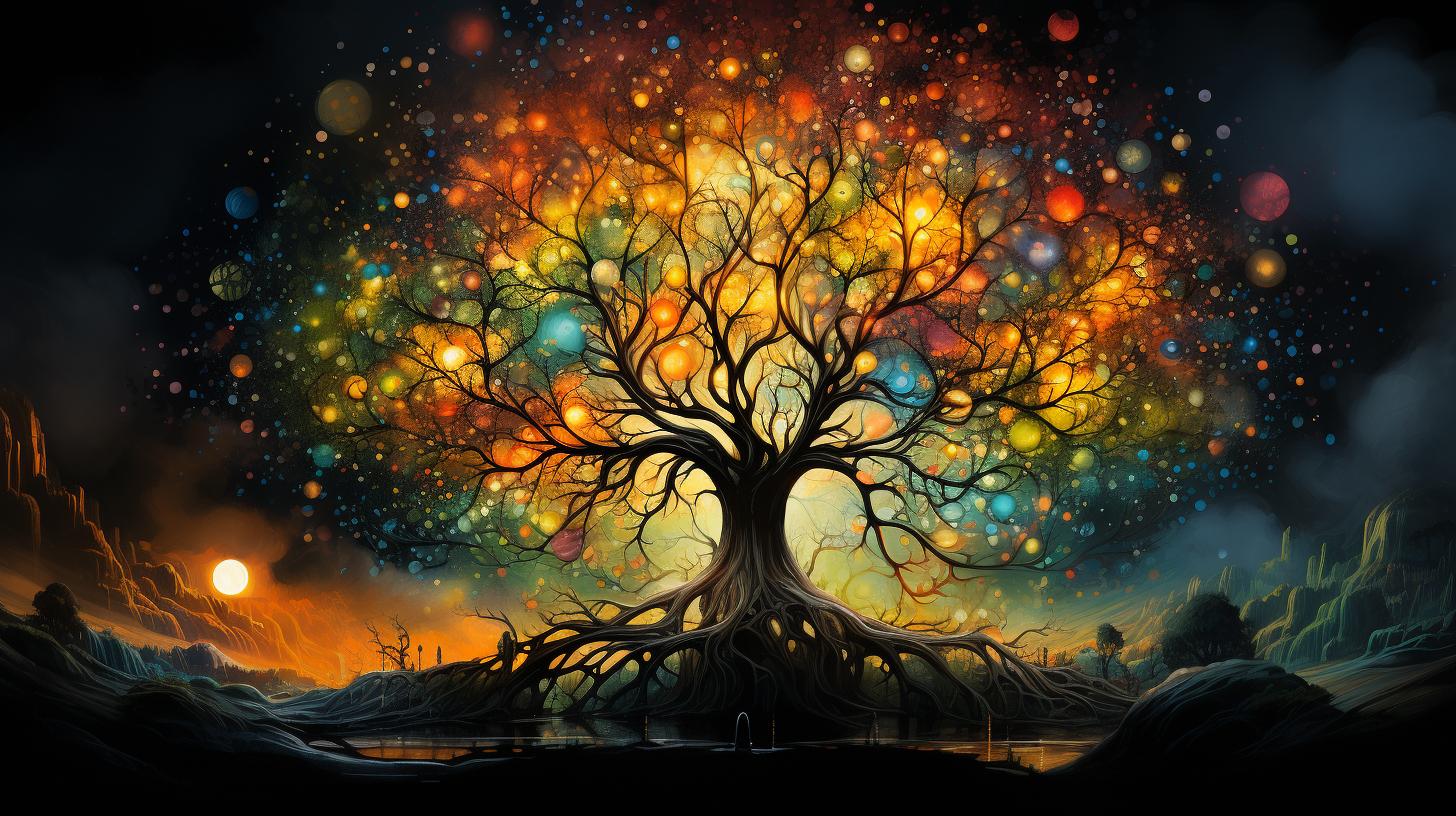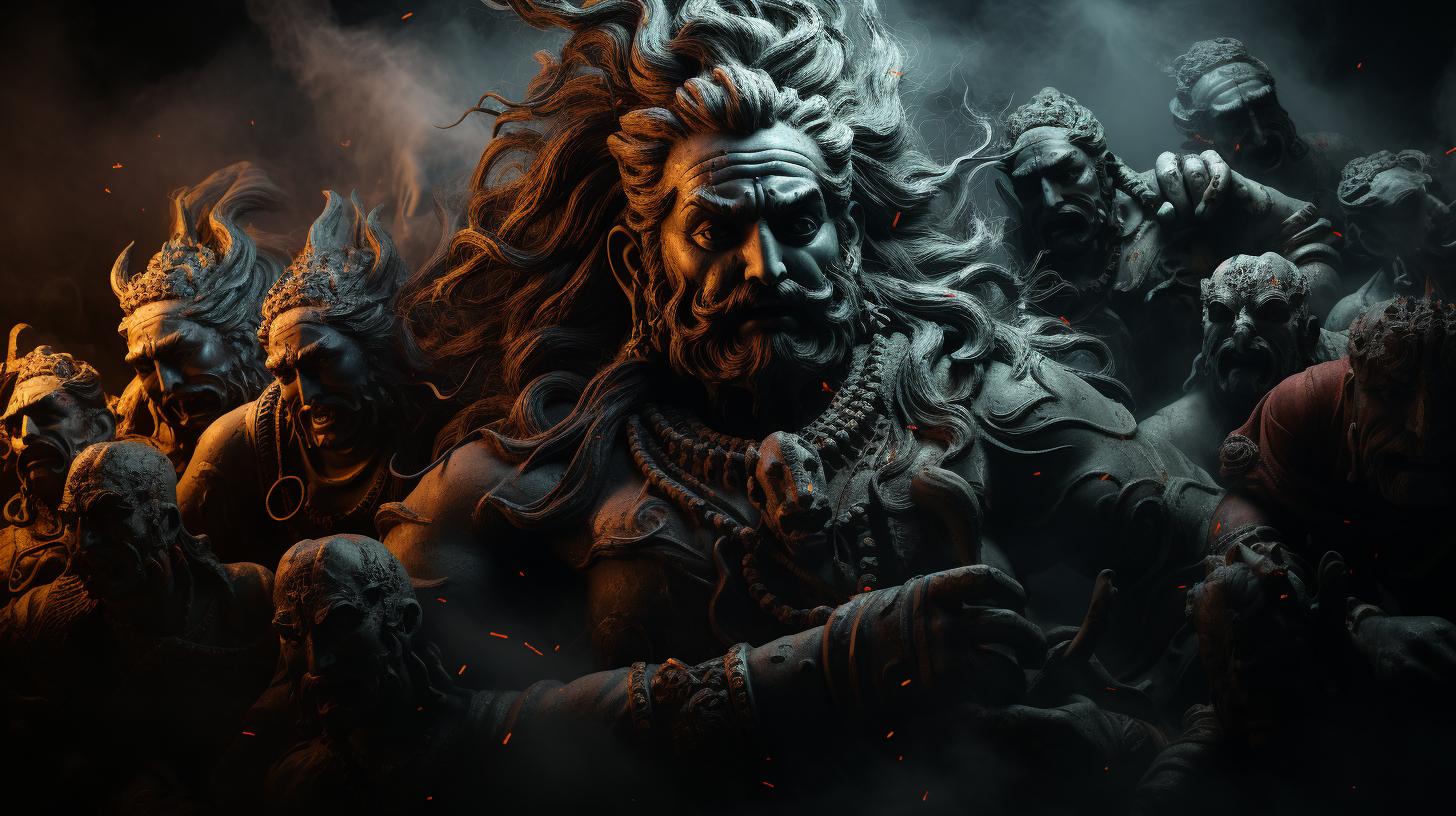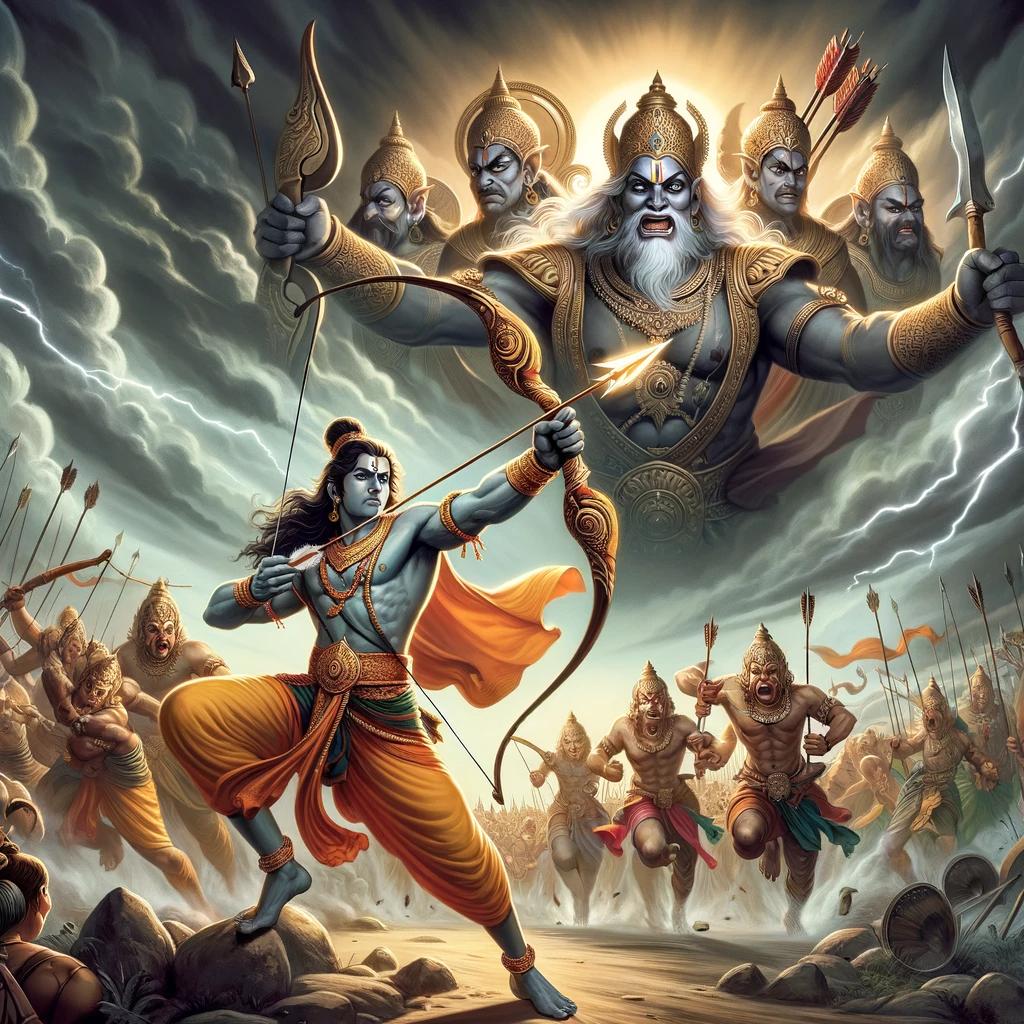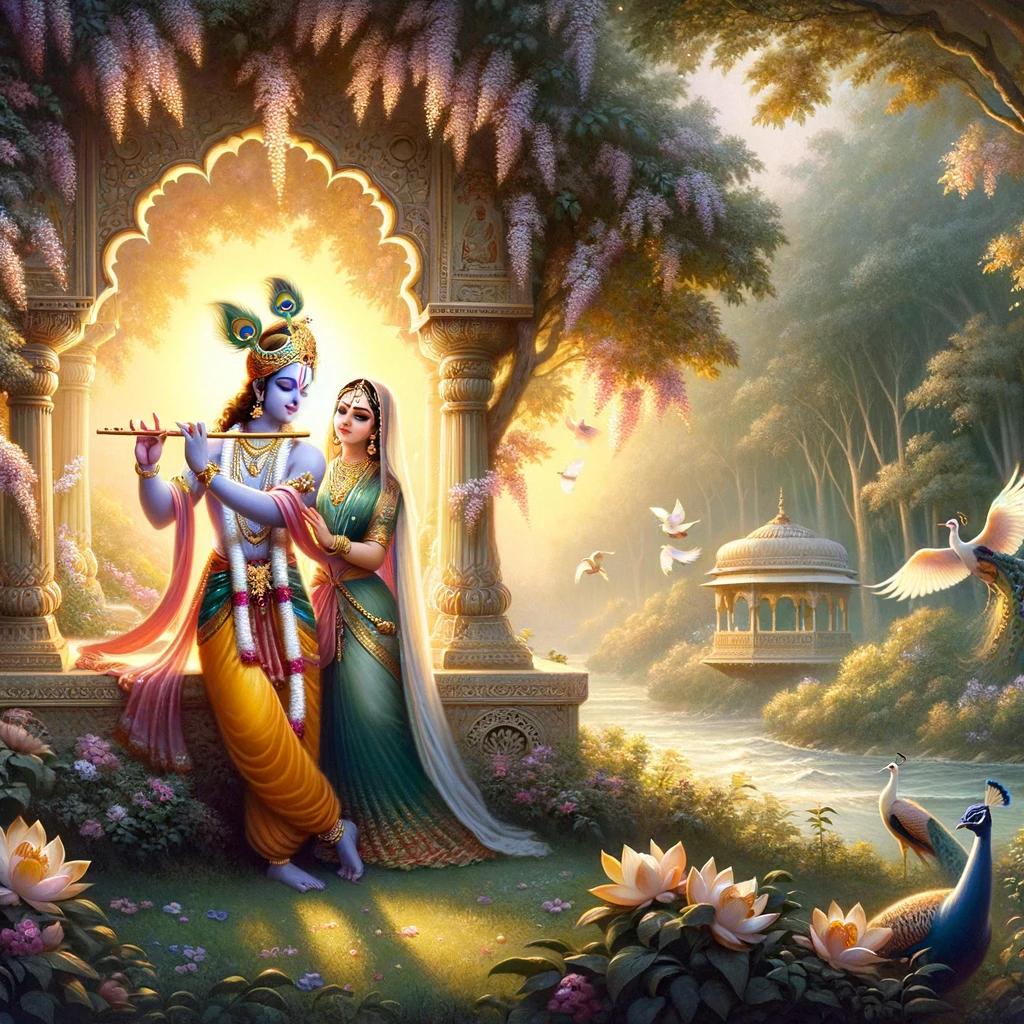Nandi the Bull: An Iconic Symbol of Devotion and Power in Hinduism
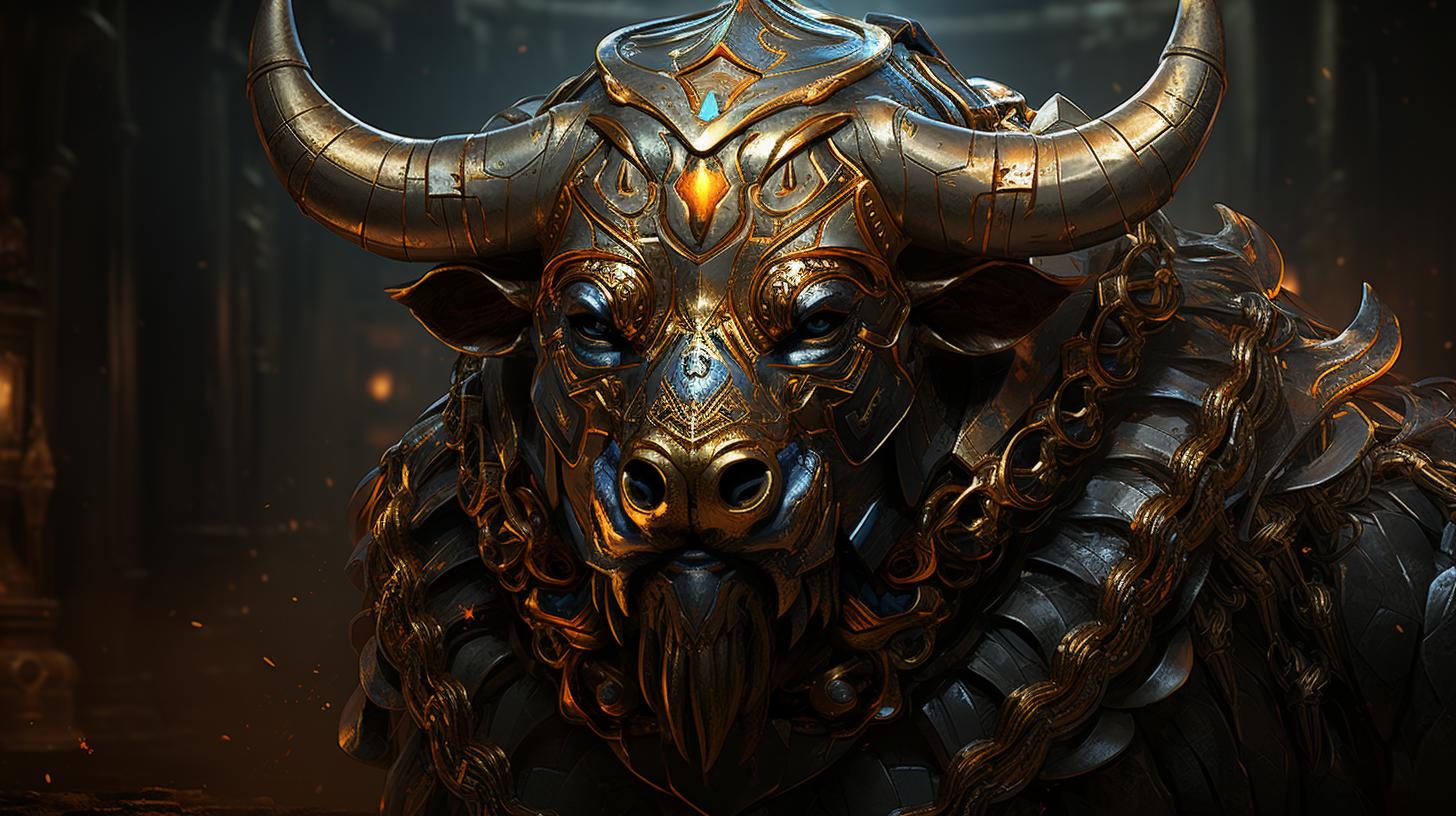
Nandi the bull holds great significance in Hinduism, symbolizing devotion and loyalty to Lord Shiva. As the vahana or vehicle of Shiva, Nandi embodies the essence of spiritual connection.
The art and sculpture representation of Nandi showcases its importance and its role as the guardian of Shiva temples. Rituals and offerings dedicated to Nandi are performed in temple worship.
With its cultural significance in India, particularly in Tamil Nadu’s temple architecture and influence on South Indian classical arts and literature, Nandi remains an iconic symbol in Hindu traditions.
The Significance of Nandi in Hinduism
The bull Nandi holds immense significance in Hinduism and plays a crucial role in the worship of Lord Shiva. It is revered as a divine symbol of devotion, loyalty, and spiritual connection.
Let’s explore the mythological origins of Nandi and its representation as the vahana of Lord Shiva.
The Mythological Origins of Nandi
In Hindu mythology, Nandi’s origin can be traced back to ancient tales and scriptures. According to one legend, Nandi is said to be born from Lord Brahma’s breath, symbolizing the eternal connection and inseparability of Nandi and Shiva. Another myth suggests that Nandi is an avatar of Lord Shiva himself, taking the form of a bull to serve as his faithful companion.
Nandi as the Vahana of Shiva
Nandi holds the esteemed position of being Lord Shiva’s vahana, which signifies its role as Shiva’s divine vehicle. As the vahana, Nandi represents the means through which devotees can connect with Shiva’s divine energy and seek his blessings.
Nandi’s association with Shiva dates back to ancient Indian culture, where cattle rearing held great importance, highlighting the sacredness and significance of cows and bulls.
The bond between Shiva and Nandi is depicted in various Hindu texts and artworks.
Nandi, often depicted seated near the entrance of Shiva temples, serves as a guardian and protector. Its majestic presence not only symbolizes devotion but also ensures that no distractions come between devotees and the worship of Shiva.
The role of Nandi signifies the inseparable connection between devotees and Shiva, representing the mind dedicated to the absolute and the embodiment of the inner guru.
Through Nandi, devotees seek spiritual transformation and strive to merge with the supreme soul, attaining liberation.
The symbolism and significance of Nandi in Hinduism go beyond its representation as a bull.
It encompasses profound devotion, spiritual connection, and the pursuit of divine blessings.
Symbolism and Meaning of Nandi
Nandi holds deep symbolism and meaning in Hinduism, representing various aspects of devotion and loyalty. This section explores Nandi as the embodiment of devotion and loyalty, as well as the representation of Nandi in art and sculpture.
Nandi as the Embodiment of Devotion and Loyalty
Nandi is revered for its unwavering devotion to Lord Shiva, making it an emblem of dedication and loyalty in Hinduism. As Shiva’s most devout worshipper, Nandi symbolizes the essence of Bhakti, a deep spiritual devotion towards the divine.
The significance of Nandi’s devotion lies in its ability to inspire worshippers to cultivate a similar level of unwavering commitment and surrender to their own spiritual path, ultimately leading to a deeper connection with the divine.
The Representation of Nandi in Art and Sculpture
Artistic depictions of Nandi portray the bull in various forms, each laden with symbolism. Different artistic styles showcase Nandi’s physical attributes, including its posture, gestures, and adornments, which further emphasize its symbolic importance.
Nandi sculptures often depict the bull with intricate carvings and attention to detail, portraying its youthfulness and purity. The presence of flowers, garlands, and ornaments carved on Nandi’s body symbolize adornment and celebration, highlighting the auspiciousness of the deity.
Additionally, Nandi’s depiction licking its own snout represents a gesture of reverence, demonstrating the bull’s unending devotion towards Lord Shiva. This gesture serves as a reminder to worshippers to approach their spiritual practices with humility and utmost sincerity.
Nandi in Hindu Temples
Nandi, the sacred bull of Shiva, holds great significance in Hindu temples. As the guardian of Shiva temples, Nandi plays a vital role in the religious and spiritual practices of devotees.
Here is a closer look at Nandi’s role as the guardian and the rituals and offerings dedicated to Nandi in temple worship.
Nandi as the Guardian of Shiva Temples
Nandi serves as the eternal guardian of Shiva temples, standing outside the sanctum sanctorum. Positioned at the entrance, Nandi represents the harmony and loyalty symbolized by the bull. It is believed that Nandi protects the sanctity of the temple and ensures the well-being of devotees.
Rituals and Offerings to Nandi in Temple Worship
In temple worship, devotees perform rituals and make offerings to seek the blessings of Nandi. The rituals include a ritual bath with water from holy rivers, the application of sandalwood paste, and the lighting of incense and lamps.
Devotees recite prayers and mantras to express their devotion and seek Nandi’s divine guidance and protection.
The offerings to Nandi typically include fresh flowers, fruits, coconut, sugarcane, and betel leaves. These offerings are presented with deep reverence and devotion, reflecting the devotee’s gratitude and seeking blessings for their spiritual journey.
- Performing ritual baths with holy water
- Applying sandalwood paste
- Lighting incense and lamps
- Presenting fresh flowers and fruits
- Offering coconut, sugarcane, and betel leaves
These rituals and offerings demonstrate the devotees’ deep connection and devotion to Nandi, seeking spiritual guidance, protection, and blessings in their lives.
Nandi and the Worship of Shiva
Nandi plays a significant role in enhancing the spiritual connection with Lord Shiva. As the devoted vahana of Shiva, Nandi represents the ideal disciple and devotee, exemplifying unwavering loyalty and surrender.
Through Nandi’s presence in Shiva temples, worshippers find inspiration and guidance in deepening their connection with the divine.
Nandi’s Role in Enhancing Spiritual Connection with Shiva
Being Shiva’s closest companion, Nandi serves as a bridge between the devotee and the divine. His unwavering devotion and proximity to Shiva inspire worshippers to cultivate similar qualities of surrender, devotion, and selflessness in their spiritual practices.
Nandi’s presence in temples offers a sacred space for devotees to seek solace, guidance, and blessings from Lord Shiva.
The Belief in Nandi’s Blessings and Fertility Symbolism
Devotees believe in Nandi’s ability to bestow blessings and fulfill their desires. It is a common practice for visitors to seek Nandi’s blessings by touching the image, particularly on the genitals, as a symbol of fertility and prosperity.
This act is seen as a way to invoke Nandi’s divine grace and secure blessings for various aspects of life, including family, relationships, and abundance.
Nandi’s significance as a fertility symbol can be traced back to the ancient Indian culture, where cattle rearing held great importance.
The association of the bull with fertility and abundance contributed to Nandi’s symbolism as a bringer of prosperity and well-being. The belief in Nandi’s blessings and fertility symbolism continues to be upheld by devotees, fostering a deep connection with the divine and a sense of spiritual fulfillment.
Cultural Significance of Nandi in India
Nandi in Tamil Nadu’s Temple Architecture
In the rich tapestry of Tamil Nadu’s temple architecture, Nandi holds a prominent place. Often situated in the temple courtyard, Nandi sculptures stand as a testimony to the artistic expression and deep spiritual devotion of the region.
These sculptures are meticulously crafted, depicting Nandi in various poses and adornments.
Nandi statues in Tamil Nadu’s temple architecture not only serve as awe-inspiring architectural elements but also reflect the inseparable bond between Nandi and Lord Shiva. They symbolize the divine energy and the path to spiritual enlightenment.
Nandi’s Influence on South Indian Classical Arts and Literature
Beyond temple architecture, Nandi’s influence extends to South Indian classical arts and literature. As an essential character in Hindu mythology, Nandi finds his place in the narratives, epics, and devotional poems composed in the region.
Dancers, musicians, and artists draw inspiration from the captivating presence of Nandi while presenting their art forms. His distinct form and symbolism are intricately woven into the fabric of South Indian cultural expressions.
Moreover, Nandi’s fervent devotion to Lord Shiva serves as a symbol of dedication and commitment for artists and individuals pursuing their artistic passions.
Nandi, in his various artistic and literary representations, continues to evoke a sense of awe and admiration, leaving an indelible mark on the cultural heritage of South India.
[Author’s Note: This section focuses on the cultural significance of Nandi in India. It explores Nandi’s role in Tamil Nadu’s temple architecture and his impact on South Indian classical arts and literature.]- Nandi in Tamil Nadu’s Temple Architecture: Nandi sculptures symbolize spiritual devotion in Tamil Nadu’s temple architecture.
- Nandi’s Influence on South Indian Classical Arts and Literature: Nandi’s presence in art and literature inspires and influences South Indian classical arts and literature.
.











